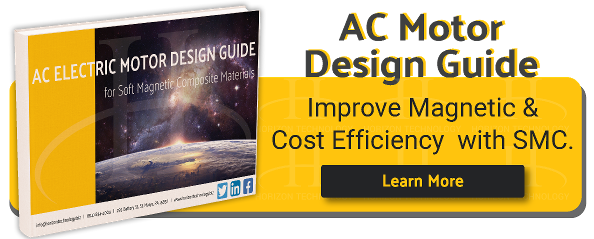Nikola Tesla and Thomas Edison are names that resonate with innovation and discovery. Despite their inherent creativity, they pursued different paths to electrify the world. Edison was promoting DC, while Tesla was promoting AC. Ultimately, Tesla's theories on AC proved to be a preferred solution for electrification. As a consequence of this and his experience in electrical engineering, he set out to create a motor that ran solely on AC power without the need for brushes. Tesla’s aim was to develop a more reliable, efficient motor with precise control over its speed and torque – something no other motor had achieved before.
Having just recovered from a nervous breakdown, Tesla was out on a walk in 1882 when he came up with the idea for the brushless AC motor, sketching both its stationary and rotating electromagnetic elements in the dirt. After extensive research and experimentation, he finally created his brushless AC motor in 1888. Little did he know, this would become one of the top ten inventions of all time, igniting an industrial revolution and helping to make modern life possible.
He envisioned both the use of magnets on the rotor and no magnets on the rotor, which then became the basis for a synchronous AC motor and an asynchronous induction motor – that worked in tandem to generate electric power without relying on any physical connection between them. By controlling the frequency and strength of the applied current, Tesla could accurately regulate both speed and torque with unprecedented precision.
The radial flux motor became the dominant motor of choice until the present time, however in another flash of brilliance by Tesla, he rationalized the potential for the axial flux motor, which he patented in 1889. Much as we see today, the axial flux showed improvements in efficiency and torque, however, the manufacturability of this axial design prevented its mass utilization in the industry.
The Early Days of the Automobile - Why Did Electric Fall Out of Fashion?
The first electric car was developed in 1832, but it wasn’t until the 1870s that electric cars became practical. They were the predominant vehicle choice until the 1920s, with crude oil and the production of the Model T.
In the early 1900s, there were three propulsion alternatives being considered: gasoline, steam, and electric. During this time, the market share for each of them was roughly equal.
Gasoline engines were noisy and hard to start, and the general public was often startled by these noisy machines. Steam was disadvantaged by the fact that it required 20-30 minutes to build up sufficient steam pressure prior to driving – not to mention the risk of burns from hot steam was omnipresent. Electric, on the other hand, was very easy to use, noiseless, and enabled driving for the mass population. Many of the early ADs for electric featured women to demonstrate the ease of use and charging stations were common in urban areas.
Even 100 years ago, electric vehicles offered nearly instantaneous torque and rapid acceleration – ironically, the first vehicle to achieve a speed of 60 mph was electric-powered. Despite these inherent benefits, electric vehicles were costly to manufacture.
Gasoline engines inevitably dominated the automotive scene, but why? This can be attributed to four key factors:
- The limited range of electric vehicles: Early electric vehicles had a max range of 30 to 50 miles.
- Gasoline, and subsequently gas-powered vehicles were more widely available, offering a wider range of flexibility.
- Henry Ford’s introduction of the moving assembly line lowered the cost of his gasoline-powered cars.
- The invention of the electric starter made it easier to use gas-powered vehicles.
The Shift Back to Electric With Soft Magnetic Composites
Fast forward 100 years and the world is changing once again, with a shift back to electric vehicles. Many of the early advantages of electric vehicles are still there, but the main limitation of the restricted range has been addressed by advancements in both electric motor and battery technology. Future advances in battery and motor technology will continue to sway the pendulum more toward electrics with the significant advantage of reduced pollution in urban environments.
Although today’s radial flux was a great design, people have been reimagining the motor with the axial flux, transverse flux, and trapezoidal flux designs, which offer compactness, higher power density, and the potential for easier manufacturability.
Realizing that a solid chunk of iron wouldn’t be efficient because of the heating, and since laminations weren’t available, Tesla postulated using iron filings to minimize the heat build-up in his brushless AC radial flux motor, the precursor to modern-day SMCs.
Soft Magnetic Composites
Modern SMCs use high-purity iron powders compacted to very high densities overcoming all the early pitfalls of iron filings, thus fulfilling Tesla’s dream. SMCs provide excellent electrical resistivity while maintaining very low hysteresis losses over a wide frequency range, meaning they can be used in high-efficiency electric motors/generators with minimal energy dissipation. Furthermore, they possess very low core loss and temperature rise characteristics when compared to conventional ferrous materials, making them an attractive choice for applications requiring high power density such as electric vehicles, where weight and potential heat build-up are particularly important.
With their improved efficiency, lower noise levels, and greater design flexibility, these SMC components are set to become the new design standard, such as the earlier radial flux design motor.
For the Future
Today, roughly 90% of all motors being manufactured are radial flux motors, mainly because they are considered a “tried and true” technology. The fact that manufacturers are already heavily invested in this type of motor has dramatically slowed down the adoption of SMCs into more efficient motor designs.
SMCs provide a simple and cost-effective way to produce these complex shapes and offer effective magnetic properties using a manufacturing process that consumes less energy and is easily recyclable. The marriage of SMCs and the electric vehicle industry have a bright future.
Tesla is quoted as saying “the desire that guides me in all I do, is the desire to harness the forces of nature to the service of mankind.” As such, he spent his life pursuing the dream of unlimited energy, creating not only electric motors, but also defining modern life as we know it.
While SMCs fulfill Tesla’s dream of using iron filings in a motor, the recent announcement of a breakthrough in nuclear fusion technology accelerates the transition back to an electrified automotive industry, further fulfilling Tesla’s dreams.




